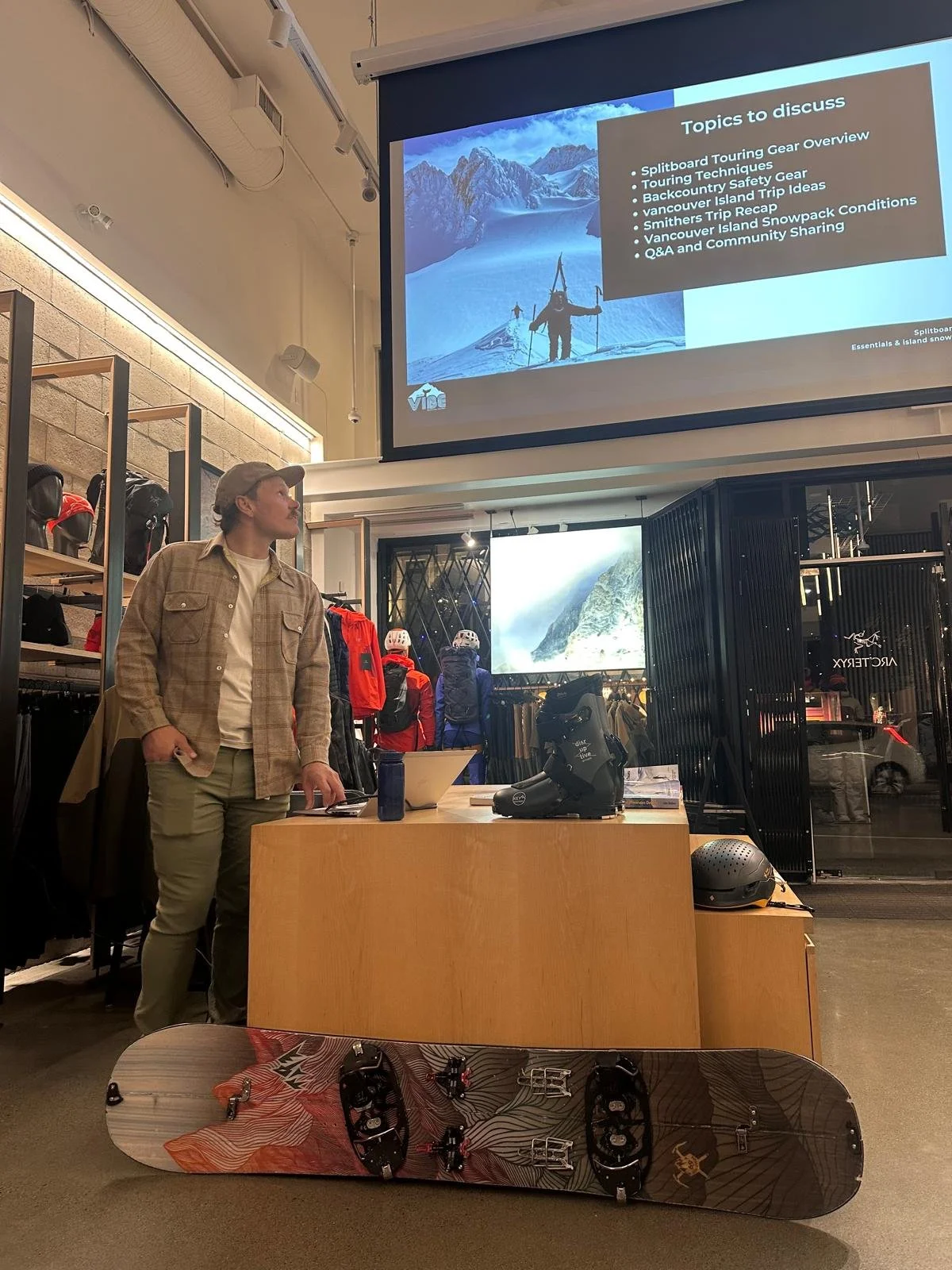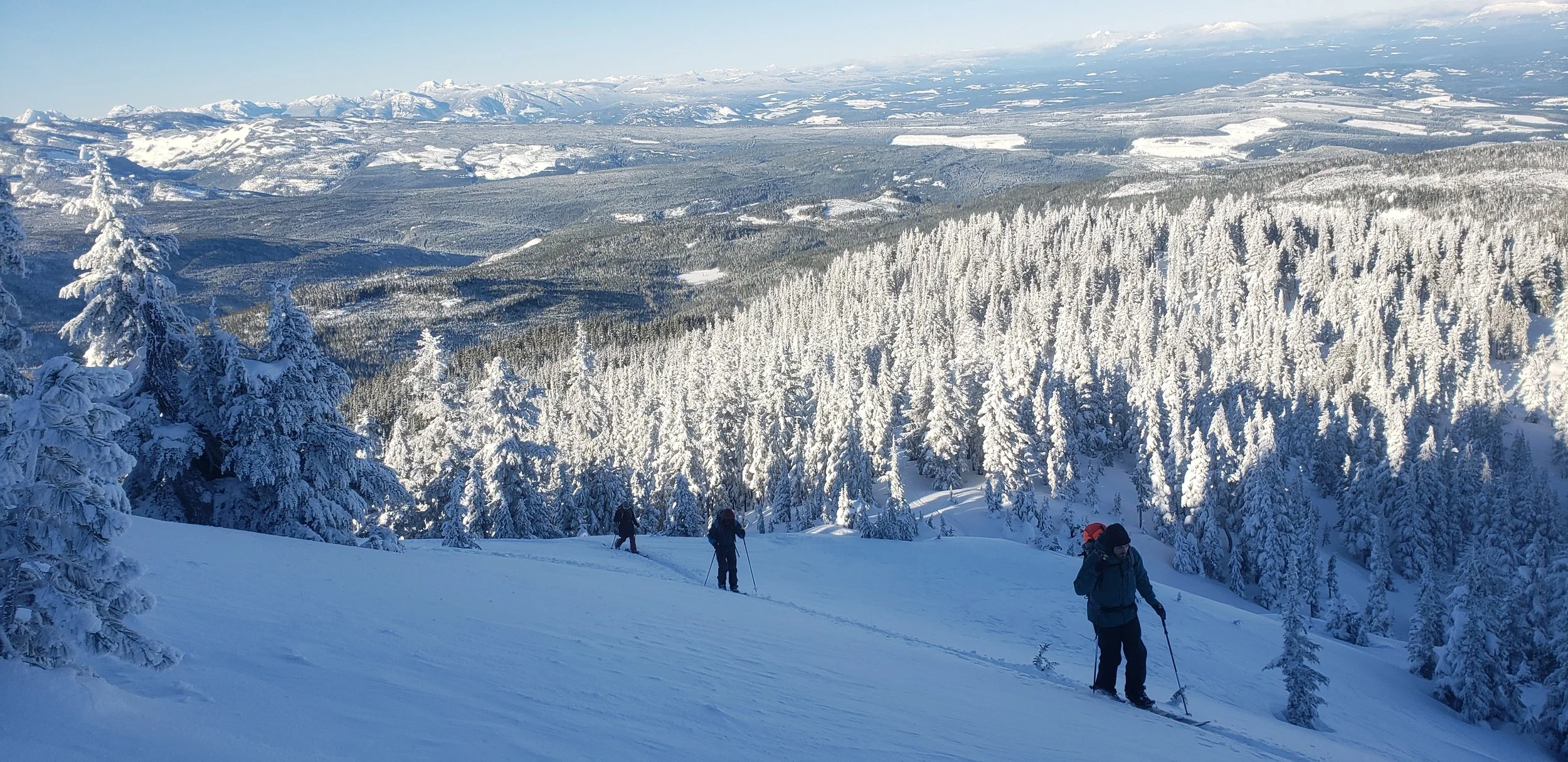What to Expect on Your First Avalanche Skills Training Course (AST 1)
Introduction: Your First Step into the Backcountry
If you’ve been thinking about venturing beyond the ski resort boundary, taking an Avalanche Skills Training (AST 1) course is the most important first step.
Whether you’re on skis, a splitboard, or snowshoes, understanding how avalanches form , and how to travel smartly in winter terrain, is what keeps every mountain day fun and safe.
At Vancouver Island Backcountry Education (VIBE), our AST 1 Avalanche Skills Training Course is designed to give you the essential knowledge, field practice, and confidence to start exploring the backcountry with awareness and good decision-making.
Who the AST 1 Course Is For
If you’re brand new to backcountry skiing or splitboarding, or if you’ve gone out with friends but want to learn why they make the decisions they do, AST 1 is for you.
You don’t need avalanche experience; you just need to be comfortable skiing or snowboarding in variable snow and open to learning.
AST 1 is perfect for:
Resort riders wanting to start touring safely
Snowshoers exploring beyond groomed trails
Ski tourers preparing for bigger objectives or guided trips
Anyone joining friends in the backcountry for the first time
Course Overview: Two Days of Focused Learning
Day 1 — Online or Evening Classroom Session
Understanding how avalanches form
Recognizing avalanche terrain and terrain traps
Reading the avalanche bulletin and weather forecasts
Basic trip planning and using the Avaluator 2.0 decision-making tool
What to pack and how to prepare for your field day
Our AST 1 course follows the official Avalanche Canada curriculum and includes both theory and hands-on learning.
This short session builds the foundation so you can spend more time outdoors learning in real conditions.
Day 2 — Field Day on the Snow
Held in Strathcona Provincial Park , or Mt. Cain, the field day is where everything comes to life.
You’ll practice:
Using your transceiver, probe, and shovel
Identifying safe vs. unsafe slopes
Observing snowpack layers and recent avalanche signs
Planning a route, traveling in small groups, and spacing correctly
Running a mock avalanche rescue as a team
By the end of the day, you’ll know how to make better terrain choices, communicate effectively with partners, and respond quickly if something goes wrong.
Learn more or book your course here:
AST 1 Avalanche Skills Training Course
What to Bring
We provide detailed gear lists before the course, but here’s what you’ll need:
Avalanche safety gear: transceiver, probe, shovel (rentals available)
Touring setup: skis, splitboard, or snowshoes
Backpack, extra layers, food, and water
Notebook, pen, and a curious mindset
You’ll get plenty of tips on how to pack efficiently for winter travel.
Learning on Vancouver Island
Vancouver Island offers some of the most dynamic snowpacks in Canada. The maritime snowpack is wetter and heavier than the dry snow found inland, which means conditions can change quickly.
That makes it an ideal classroom for avalanche learning, you’ll see real snowpack layering, changing weather, and terrain variation all in a single weekend.
VIBE Guide & instructors live and guide here year-round. Our courses focus on local conditions, hands-on experience, and small groups so everyone gets personal attention.
Why Take AST 1 with VIBE
Certified ACMG guides and Avalanche Canada educators
Small class sizes for maximum field time
Local Island terrain knowledge
A welcoming, supportive learning environment
Follow-up resources and progression to AST 2 Avalanche Training
We don’t just teach avalanche theory , we help you understand how to move through real terrain safely.
Next Steps
After AST 1, most students:
Practice with friends for a few days in simple terrain
Review bulletins and trip plans regularly
Join a guided trip or sign up for AST 2 once they’re ready to take leadership in route planning and group decisions
If you’re not sure whether you’re ready for AST 2, our instructors are always happy to chat about your next step.
Final Thoughts
The backcountry on Vancouver Island is a place of adventure, freedom, and connection — but it rewards those who are prepared.
Taking your AST 1 is the best way to build those skills and start your mountain journey on solid footing.
Join us this winter to learn, explore, and gain confidence in the island’s beautiful alpine terrain.
Book your next course:
AST 1 Avalanche Skills Trainin


